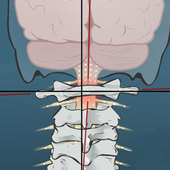
What is “blue light” and what does it have to do with head injuries? Concussions, or really any type of head injury, can be a challenging injury to manage, particularly if it is chronic.
But did you know that something as simple as wearing a certain pair of glasses can help to alleviate the symptoms? When I encounter a patient that has been diagnosed with a concussion, the first thing I ask is whether or not they have picked up a set of TrueBlue lenses. These lenses effectively filter blue light, which is crucial to helping the brain recover post-injury.
When you step out into the sun, or turn on your computer or cell phone, your eyes are being exposed to a variety of visible and invisible light rays. Blue light measures between 380-500 nanometers on the light spectrum and is commonly emitted from fluorescent lights and electronic screens such as computers, smart phones, and iPads. While there can be benefits to blue light exposure, when one is suffering from a head injury blue light exposure can actually hinder the healing process and potentially cause detrimental long-term side effects.
Recent research has found that our near-constant exposure to blue light is potentially creating an epidemic of physiological changes including macular degeneration and a disruption in natural circadian rhythms, as well as potentially causing attention and depressive issues. Blue light can actually disrupt appropriate cellular metabolism in the retina and the eye, and it also disrupts the brain’s metabolism and its ability to heal. This phenomenon is why many people who have suffered a head injury are very light or screen sensitive; their body has a very difficult time processing the wavelength of blue light that is so prevalent in our industrialized societies.
As previously mentioned, acquiring a pair of TrueBlue lenses is an easy way to aid the healing process. These lenses have been created in conjunction with NASA and have a yellow filter to eliminate the particular wavelength of blue light. I have to say, the first time I tried them I was very impressed at what a difference they made. Although I have not suffered a concussion, I immediately noticed a lessening in tension through my shoulders, and it felt like my eyes weren’t straining as much to see. For a very affordable cost (around $100 CAD), and a turnaround of a couple of days for shipping, they are well worth the investment. Another easy change is to ensure that the lightbulbs in your home (and preferably work environment as well) are of a rating that is no more than 2700K. This is a more soft, yellow light, and it will create less eye strain and help to prevent brain fatigue. Did you know that most smart phones are equipped with a setting that can change the screen to have a yellow filter? With iPhones, this can be found in the Settings>Display and Brightness>Night Shift. For Android users, swipe the drop down menu and there is an app called Night Mode. It is important that everyone change it during the evening hours, but for those having suffered a head injury, it is advised to change it 24 hours a day.
Even if you haven’t suffered a head injury, implementing some of these suggestions will help prevent some of the adverse responses to blue light exposure. If you have suffered an injury, these are simple tools that will help ensure the most efficacious recovery and help you get your life back.
Written by Dr. Mylène Hopf



